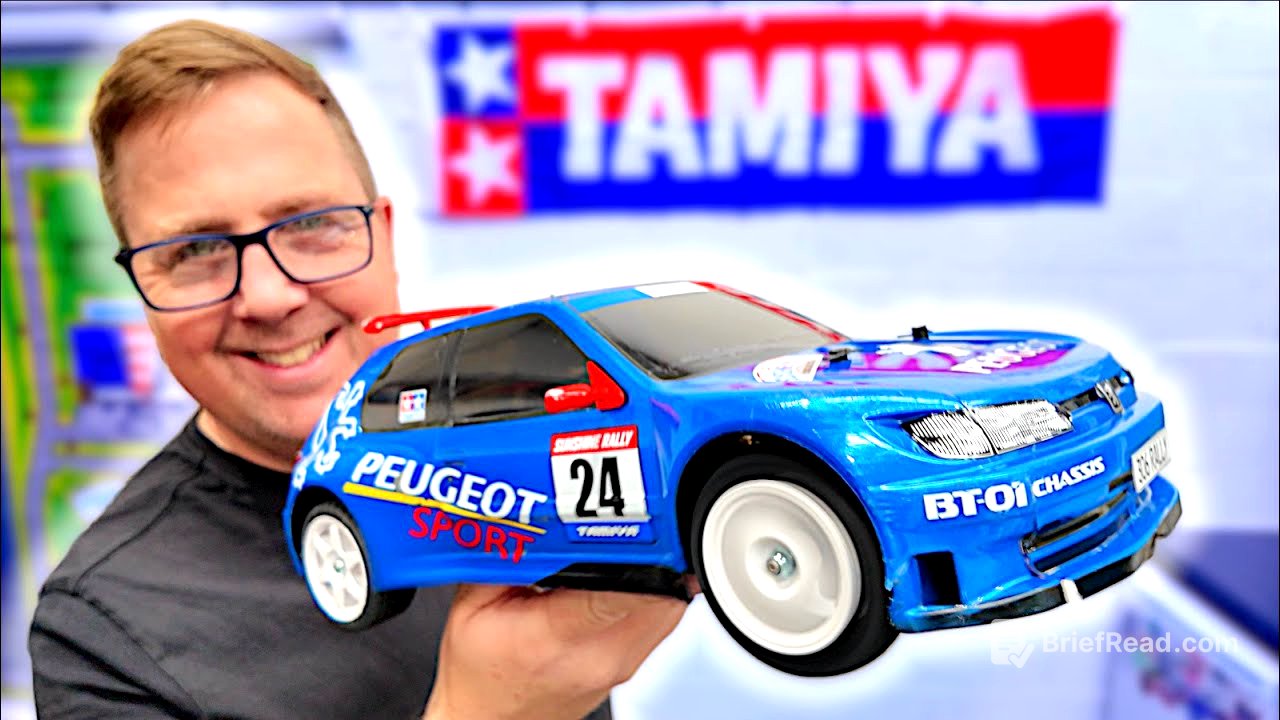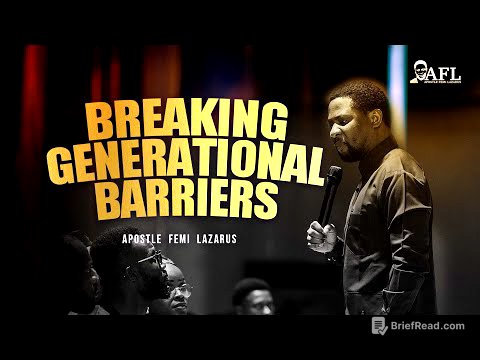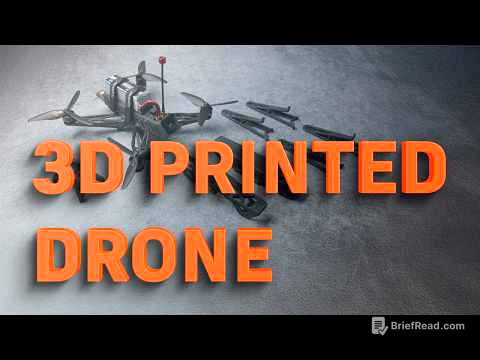TLDR;
This video showcases the build and test of the Tamiya B01 Peugeot 306 Maxi, a front-wheel drive RC car. The presenter addresses initial concerns about slop in the chassis, demonstrating how to mitigate it using Traxxas shims and other upgrades. He then modifies the car with a brushless motor for increased speed and tests its performance on tarmac and a track, highlighting its handling characteristics and potential with further tuning.
- The Tamiya B01 chassis has versatility with motor placement and wheelbase adjustments.
- Addressing slop issues with Traxxas shims significantly improves handling.
- Upgrading to a brushless motor enhances speed and responsiveness.
Introduction to the Tamiya B01 Peugeot 306 Maxi [0:00]
The presenter expresses his fondness for Tamiya kits and front-wheel drive RC cars, acknowledging that the latter aren't universally liked due to their different handling characteristics and traction limitations. He introduces the new Tamiya B01 Peugeot 306 Maxi kit, which was a Group A rally car. This is his first B01 chassis build (excluding the Supra), noting its multiple configuration options, including midship rear motor, rear-wheel drive, front motor, front-wheel drive, or front motor, rear-wheel drive.
Addressing Slop Issues and Upgrades [1:00]
The presenter acknowledges the B01 chassis's reputation for excessive slop in its components, a common criticism seen in online videos. He credits RC Kicks and Poor Boys RC for their videos on improving the B01, and a commenter on Poor Boy's video for recommending Traxxas shims. These shims are described as a perfect fit for eliminating slop in the arms. Additional upgrades include low friction suspension balls, bearings, and Yeah Racing oil shocks. The presenter notes that while Tamiya could easily fix the slop issue by including shims in the kit, he appreciates the chassis's versatility in terms of motor placement and wheelbase adjustments.
Brushless Motor Installation and Initial Adjustments [4:55]
The presenter details the installation of a Castle Copperhead 10 7,700 KV brushless motor, which can run up to 4S, though he's using 2S for this video. He replaces the stock silver can motor and Hobbywing ESC, noting the ease of swapping motors due to the chassis design. He mentions the need for a steel pinion to handle the increased power. After installation, he adjusts the motor direction using the Castle Link and addresses excessive steering flex by reducing the dual rate.
Body Painting and Preparation for Testing [8:39]
The presenter glues the tyres and prepares the body, applying a metallic blue layer for added sparkle. He expresses satisfaction with the body's appearance, particularly its appeal to European enthusiasts. Before testing, he anticipates the car being overly powerful even on 2S and plans to reduce the throttle. He expresses hope that the car will drive well, given the issues he's seen in other videos, and mentions fixing the steering linkage to reduce play.
Tarmac Testing and Initial Speed Runs [11:23]
The presenter conducts initial tests on tarmac, noting the car's straight tracking and the need to adjust the dual rate due to the powerful motor. He experiences rollovers during full throttle runs, resulting in minor damage to the body. Despite these issues, he achieves a speed of 43 mph, later verified at 47 mph. He notes the tendency for the front end to dig in under full throttle and plans to adjust the rear toe-in and steering.
Tweaking and Further Speed Runs [14:11]
After tweaking the rear toe and steering, the presenter finds the car easier to control at reasonable speeds. He performs a clean speed run without the body, achieving 50 mph on 2S. He attributes the improved performance to the absence of the body, suggesting aerodynamic effects.
Track Testing and Final Thoughts [16:51]
The presenter tests the car on a track, dialing down the throttle and tweaking the steering. He applies Tamiya AW grease to the ball ends to tighten up the steering. He notes the need to soften the suspension for better grip but is generally pleased with the car's handling. He completes several clean laps, showcasing the car's dialed-in performance. He concludes that the B01 chassis, with the modifications, is better than its reputation suggests. He acknowledges that a stock build would not perform as well but believes most Tamiya enthusiasts modify and upgrade their kits anyway. Despite the initial slop issues, which he feels Tamiya should address, he enjoys the build and anticipates further improvements.


![Peppa Pig - Granny and Grandpa's Attic (42 episode / 2 season) [HD]](https://wm-img.halpindev.com/p-briefread_c-10_b-10/urlb/aHR0cDovL2ltZy55b3V0dWJlLmNvbS92aS9pWmltUlJDU3h6SS9ocWRlZmF1bHQuanBn.jpg)






